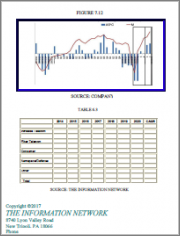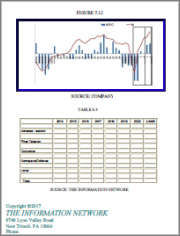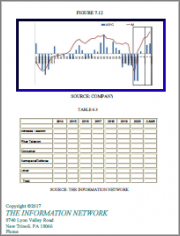
|
시장보고서
상품코드
1700072
세계의 스위치 및 조광기 시장 : 제품 유형, 기술, 유통 채널, 용도, 최종 사용자, 지역별 예측 및 분석(-2032년)Switches and Dimmers Market Forecasts to 2032 - Global Analysis By Product Type (Switches and Dimmers), Technology (Manual, Remote Control, Wired, Wireless and Smart Home Integration), Distribution Channel, Application, End User and By Geography |
||||||
Stratistics MRC에 따르면 세계의 스위치 및 조광기 시장은 2025년에 196억 달러를 차지하고 예측 기간 동안 CAGR 6.2%를 나타내며 2032년에는 299억 달러에 이를 전망입니다.
스위치 및 조광기는 공간 조명을 제어하는 데 사용되는 중요한 전기 부품입니다.스위치는 일반적으로 기계적인 토글 또는 푸시 버튼 메커니즘을 사용하여 조명을 켜거나 끄는 간단한 장치입니다.
미국 에너지부의 보고서에 따르면 조명 분야에서만 2020년 총 전력 소비량의 약 12%를 차지했으며, 에너지 효율이 높은 스위치 및 조광기가 에너지 사용량을 대폭 삭감할 가능성이 부각되었습니다.
스마트 홈 기술의 상승
스마트 홈 기술의 대두는 시장에 큰 영향을 주어 편리함과 제어성을 향상시켜 줍니다. 로의 전환은 에너지 효율이 높고 맞춤형 조명 옵션에 대한 수요를 높이고 기술 혁신을 촉진하며 시장을 확대하고 있습니다.
호환성 및 상호 운용성 문제
시장에서의 호환성과 상호 운용성 문제는 소비자 경험에 큰 악영향을 미칠 수 있습니다. 이와 같은 기능상의 문제로 이어질 수 있으며, 그 결과 사용자 불만이 생겨 스마트 조명 솔루션의 채용을 방해할 수 있습니다.
조명의 미관과 쾌적성 향상
시장은 조명의 아름다움과 편안함을 향상시키기 위해 진화하고 있으며 현대적인 인테리어를 돋보이게하는 세련되고 세련된 디자인을 제공합니다. 이 수준의 사용자 정의는 편안함을 향상시킬뿐만 아니라 여분의 조명을 줄이고 에너지 효율성에도 기여합니다.
설치의 복잡성
시장에서의 설치의 복잡성은 소비자에게 큰 장벽이 될 수 있습니다. 첨단 스마트 스위치 및 조광기의 대부분은 복잡한 배선 및 호환성 문제로 인해 전문가의 설치가 필요하며 비용 상승과 설정 시간의 장기화로 이어집니다. 잡음은 DIY 애호가의 의욕을 초래하고, 추가적인 인건비를 초래하고, 보다 새로운 기술의 채용을 지연시킬 수 있습니다. 또한 부적절한 설치는 성능 불량이나 보증의 무효화로 이어져, 사용자 경험과 고객 만족을 더욱 복잡하게 할 가능성이 있습니다.
COVID-19의 영향 :
COVID-19의 유행은 시장에 다양한 영향을 주었습니다. 사람들이 집에서 보내는 시간이 길어지고, 홈 센터 제품에 대한 수요가 급증한 반면, 시장은 조업 정지나 공장 폐쇄에 의한 제조나 공급 체인의 혼란에도 직면 팬데믹 동안 스마트 홈 기술에 대한 주목이 높아지면서 혁신적이고 원격 조작 가능한 스위치 및 조광기 수요가 증가했습니다.
예측 기간 동안 리모컨 부문이 최대가 될 것으로 예상
예측 기간 동안 리모컨 분야가 최대 시장 점유율을 차지할 것으로 예상됩니다. 뛰어난 편의성을 통해 스위치를 물리적으로 건드리지 않고도 쉽게 제어할 수 있어 사용자 경험이 향상되며, 원격 기능은 더 높은 에너지 효율, 보안 및 개인화를 제공하며 스마트 조명 분야의 성장에 박차를 가하고 있습니다.
예측기간 중 CAGR이 가장 높아지는 것은 가로 조명 분야
예측 기간 동안 거리 조명 분야가 가장 높은 성장률을 보일 것으로 예측됩니다. 계속 가능한 인프라를 목표로 하는 중, 인감 센서나 자동 조광 시스템과 같은 선진 기술의 통합이 일반적으로 되고 있습니다.이 시장은 에너지 절약과 가로등 관리의 강화의 양쪽 모두를 서포트하는 기술 혁신에 의해 확대하는 태세를 정돈하고 있습니다.
최대 점유율을 차지하는 지역 :
예측 기간 동안 아시아태평양은 도시화, 건설 활동 증가로 최대 시장 점유율을 차지할 것으로 예상됩니다. 소비자는 편의성 향상, 에너지 절약, 설계 유연성을 제공하는 혁신적인 자동화 시스템을 선택하게 되어 있습니다.
CAGR이 가장 높은 지역 :
예측 기간 동안 북미가 가장 높은 CAGR을 나타낼 것으로 예상됩니다. 비용은 편의성 향상과 제어를 제공하는 홈 오토메이션 시스템을 점점 더 요구하고 있습니다.
무료 사용자 지정 오퍼링 :
이 보고서를 구독하는 고객에게는 다음 무료 맞춤설정 옵션 중 하나를 제공합니다.
- 기업 프로파일
- 추가 시장 기업의 종합적 프로파일링(최대 3개사)
- 주요 기업의 SWOT 분석(최대 3개사)
- 지역 세분화
- 고객의 관심에 응한 주요국 시장 추계·예측·CAGR(주 : 타당성 확인에 따름)
- 경쟁 벤치마킹
- 제품 포트폴리오, 지리적 존재, 전략적 제휴에 기반한 주요 기업 벤치마킹
목차
제1장 주요 요약
제2장 서문
- 개요
- 이해관계자
- 조사 범위
- 조사 방법
- 데이터 마이닝
- 데이터 분석
- 데이터 검증
- 조사 접근
- 조사 자료
- 1차 조사 자료
- 2차 조사 정보원
- 전제조건
제3장 시장 동향 분석
- 성장 촉진요인
- 성장 억제요인
- 기회
- 위협
- 제품분석
- 기술 분석
- 용도 분석
- 신흥 시장
- COVID-19의 영향
제4장 Porter's Five Forces 분석
- 공급기업의 협상력
- 구매자의 협상력
- 대체품의 위협
- 신규 참가업체의 위협
- 경쟁 기업간 경쟁 관계
제5장 세계의 스위치 및 조광기 시장 : 제품 유형별
- 스위치
- 기본 스위치
- 스마트 스위치
- 푸시 버튼 스위치
- 로커 스위치
- 로터리 스위치
- 조광기
- 로터리 조광기
- 슬라이드 조광기
- 터치 조광기
- 스마트 조광기
제6장 세계의 스위치 및 조광기 시장 : 기술별
- 매뉴얼
- 원격 제어
- 유선
- 무선
- 스마트홈 통합
제7장 세계의 스위치 및 조광기 시장 : 유통 채널별
- 온라인 판매
- 오프라인 판매
- 직접 판매
제8장 세계의 스위치 및 조광기 시장 : 용도별
- 거실
- 접객
- 창고
- 거리 조명
- 차량 조명
- 병원 및 진료소
- 기타 용도
제9장 세계의 스위치 및 조광기 시장 : 최종 사용자별
- 주거용 소비자
- 상업용 사용자
- 산업 및 제조
- 정부 건물
- 자동차
- 기타 최종 사용자
제10장 세계의 스위치 및 조광기 시장 : 지역별
- 북미
- 미국
- 캐나다
- 멕시코
- 유럽
- 독일
- 영국
- 이탈리아
- 프랑스
- 스페인
- 기타 유럽
- 아시아태평양
- 일본
- 중국
- 인도
- 호주
- 뉴질랜드
- 한국
- 기타 아시아태평양
- 남미
- 아르헨티나
- 브라질
- 칠레
- 기타 남미
- 중동 및 아프리카
- 사우디아라비아
- 아랍에미리트(UAE)
- 카타르
- 남아프리카
- 기타 중동 및 아프리카
제11장 주요 발전
- 계약, 파트너십, 협업, 합작투자
- 인수와 합병
- 신제품 발매
- 사업 확대
- 기타 주요 전략
제12장 기업 프로파일링
- Schneider Electric
- Hager Group
- Lutron Electronics
- ABB
- Honeywell
- Panasonic
- Siemens
- Havells
- Eaton Corporation
- Salzer Electronics
- Philips
- Hubbell Incorporated
- Samsung Electronics Co., Ltd.
- Johnson Controls International plc
- GE Lighting
According to Stratistics MRC, the Global Switches and Dimmers Market is accounted for $19.6 billion in 2025 and is expected to reach $29.9 billion by 2032 growing at a CAGR of 6.2% during the forecast period. Switches and dimmers are essential electrical components used to control the lighting in a space. A switch is a simple device that turns a light on or off, typically using a mechanical toggle or push-button mechanism. A dimmer, on the other hand, allows for adjusting the brightness of a light by controlling the voltage supplied to the bulb. Dimmer switches offer enhanced flexibility, creating a customized ambiance, while traditional switches provide a straightforward way to control light fixtures.
According to a report by the U.S. Department of Energy, the lighting sector alone accounted for approximately 12% of total electricity consumption in 2020, highlighting the potential for energy-efficient switches and dimmers to significantly reduce energy use.
Market Dynamics:
Driver:
Rise of smart home technology
The rise of smart home technology has significantly impacted the market, offering enhanced convenience and control. Smart switches and dimmers allow users to adjust lighting remotely via smartphones, voice assistants, or automation systems. This shift toward smart solutions has increased demand for energy-efficient, customizable lighting options, driving innovation and expanding the market. Integration with home automation systems and improved user experiences continue to fuel the growth of this sector.
Restraint:
Compatibility and interoperability issues
Compatibility and interoperability issues in the market can have a significant negative impact on consumer experience. Inconsistent integration with different lighting systems, home automation devices, or smart home platforms can lead to functionality problems, such as poor performance or inability to control multiple devices seamlessly. This results in frustration for users and may hinder the adoption of smart lighting solutions. Additionally, such issues can lead to increased maintenance costs and a lack of reliability in connected systems.
Opportunity:
Enhanced lighting aesthetics and comfort
The market has evolved to prioritize enhanced lighting aesthetics and comfort, offering sleek, stylish designs that complement modern interiors. Dimmer switches allow users to adjust brightness levels, creating the perfect ambiance for any room or activity, from relaxing to working. This level of customization not only improves comfort but also contributes to energy efficiency by reducing excess lighting. With a focus on both visual appeal and functionality, these innovations offer users a more personalized and enjoyable lighting experience.
Threat:
Installation complexity
Installation complexity in the market can create significant barriers for consumers. Many advanced smart switches and dimmers require professional installation due to intricate wiring or compatibility issues, leading to higher costs and longer setup times. This complexity can discourage DIY enthusiasts and result in additional labor fees, slowing down the adoption of newer technologies. Additionally, improper installation may lead to faulty performance or voided warranties, further complicating the user experience and customer satisfaction.
Covid-19 Impact:
The COVID-19 pandemic had a mixed impact on the market. While demand for home improvement products surged as people spent more time at home, the market also faced disruptions in manufacturing and supply chains due to lockdowns and factory closures. The increased focus on smart home technologies during the pandemic led to a rise in demand for innovative, remote-controllable switches and dimmers. However, economic uncertainty and reduced spending affected sales in certain segments of the market.
The remote control segment is expected to be the largest during the forecast period
The remote control segment is expected to account for the largest market share during the forecast period. With the rise of smart home technology, remote-controlled switches and dimmers allow users to adjust brightness and settings from anywhere, using smartphones, tablets, or voice assistants. This added convenience enhances user experience by providing easy control without needing to physically interact with the switch. Moreover, remote capabilities offer greater energy efficiency, security, and personalization, fueling growth in the smart lighting sector.
The street lighting segment is expected to have the highest CAGR during the forecast period
Over the forecast period, the street lighting segment is predicted to witness the highest growth rate. Smart switches and dimmers allow for better control of lighting intensity, reducing energy consumption while enhancing the overall safety and aesthetics of urban spaces. As cities move towards sustainable infrastructure, the integration of advanced technologies such as motion sensors and automated dimming systems is becoming common. This market is poised for expansion, with innovations supporting both energy savings and enhanced street lighting management.
Region with largest share:
During the forecast period, the Asia Pacific region is expected to hold the largest market share due to urbanization, increasing construction activities. Rising disposable incomes and technological advancements are driving the adoption of smart switches and dimmers, particularly in countries like China, India, and Japan. Consumers are increasingly opting for innovative, automated systems that offer enhanced convenience, energy savings, and design flexibility. This trend is expected to continue, fostering significant market growth in the region.
Region with highest CAGR:
Over the forecast period, the North America region is anticipated to exhibit the highest CAGR. The growing demand for smart homes is one of the biggest factors driving the market. Consumers increasingly prefer devices that integrate seamlessly with smart home systems. Consumers are increasingly looking for home automation systems that provide enhanced convenience and control. Moreover, there is a growing desire for customized lighting solutions that provide greater flexibility in terms of brightness and atmosphere.
Key players in the market
Some of the key players in Switches and Dimmers Market include Schneider Electricm Hager Group, Lutron Electronics, ABB, Honeywell, Panasonic, Siemens, Havells, Eaton Corporation, Salzer Electronics, Philips, Hubbell Incorporated, Samsung Electronics Co., Ltd., Johnson Controls International plc and GE Lighting.
Key Developments:
In February 2025, ABB India launched its new range of 'LIORA' modular switches at ELECRAMA 2025. Designed for smart residential, commercial, and hospitality spaces, 'LIORA' switches are engineered to set new benchmarks in the modular switch industry. This new range of switches, sockets, and Miniature Circuit Breakers (MCBs) seamlessly integrates modern technology, with superior safety, performance and aesthetics.
In January 2025, GE unveiled several new smart home products, including new Matter-compatible Cync smart switches, non-Matter Cync lighting, and upscale smart shades. GE's new Cync switches - the Smart Keypad Dimmer ($44.99) and Smart Paddle Dimmer ($25.99) - won't use the usual quirky Cync design. The keypad dimmer, pictured at the top of this story, is more utilitarian, with programmable buttons for scenes or group control and up-and-down buttons for dimming at the bottom.
Product Types Covered:
- Switches
- Dimmers
Technologies Covered:
- Manual
- Remote Control
- Wired
- Wireless
- Smart Home Integration
Distribution Channels Covered:
- Online Sales
- Offline Sales
- Direct Sales
Applications Covered:
- Living Rooms
- Hospitality
- Warehouses
- Street Lighting
- Vehicle Lighting
- Hospitals and Clinics
- Other Applications
End Users Covered:
- Residential Consumers
- Commercial Users
- Industrial & Manufacturing
- Government Buildings
- Automotive
- Other End Users
Regions Covered:
- North America
- US
- Canada
- Mexico
- Europe
- Germany
- UK
- Italy
- France
- Spain
- Rest of Europe
- Asia Pacific
- Japan
- China
- India
- Australia
- New Zealand
- South Korea
- Rest of Asia Pacific
- South America
- Argentina
- Brazil
- Chile
- Rest of South America
- Middle East & Africa
- Saudi Arabia
- UAE
- Qatar
- South Africa
- Rest of Middle East & Africa
What our report offers:
- Market share assessments for the regional and country-level segments
- Strategic recommendations for the new entrants
- Covers Market data for the years 2024, 2025, 2026, 2028, and 2032
- Market Trends (Drivers, Constraints, Opportunities, Threats, Challenges, Investment Opportunities, and recommendations)
- Strategic recommendations in key business segments based on the market estimations
- Competitive landscaping mapping the key common trends
- Company profiling with detailed strategies, financials, and recent developments
- Supply chain trends mapping the latest technological advancements
Free Customization Offerings:
All the customers of this report will be entitled to receive one of the following free customization options:
- Company Profiling
- Comprehensive profiling of additional market players (up to 3)
- SWOT Analysis of key players (up to 3)
- Regional Segmentation
- Market estimations, Forecasts and CAGR of any prominent country as per the client's interest (Note: Depends on feasibility check)
- Competitive Benchmarking
- Benchmarking of key players based on product portfolio, geographical presence, and strategic alliances
Table of Contents
1 Executive Summary
2 Preface
- 2.1 Abstract
- 2.2 Stake Holders
- 2.3 Research Scope
- 2.4 Research Methodology
- 2.4.1 Data Mining
- 2.4.2 Data Analysis
- 2.4.3 Data Validation
- 2.4.4 Research Approach
- 2.5 Research Sources
- 2.5.1 Primary Research Sources
- 2.5.2 Secondary Research Sources
- 2.5.3 Assumptions
3 Market Trend Analysis
- 3.1 Introduction
- 3.2 Drivers
- 3.3 Restraints
- 3.4 Opportunities
- 3.5 Threats
- 3.6 Product Analysis
- 3.7 Technology Analysis
- 3.8 Application Analysis
- 3.9 Emerging Markets
- 3.10 Impact of Covid-19
4 Porters Five Force Analysis
- 4.1 Bargaining power of suppliers
- 4.2 Bargaining power of buyers
- 4.3 Threat of substitutes
- 4.4 Threat of new entrants
- 4.5 Competitive rivalry
5 Global Switches and Dimmers Market, By Product Type
- 5.1 Introduction
- 5.2 Switches
- 5.2.1 Basic Switches
- 5.2.2 Smart Switches
- 5.2.3 Push Button Switches
- 5.2.4 Rocker Switches
- 5.2.5 Rotary Switches
- 5.3 Dimmers
- 5.3.1 Rotary Dimmers
- 5.3.2 Slide Dimmers
- 5.3.3 Touch Dimmers
- 5.3.4 Smart Dimmers
6 Global Switches and Dimmers Market, By Technology
- 6.1 Introduction
- 6.2 Manual
- 6.3 Remote Control
- 6.4 Wired
- 6.5 Wireless
- 6.6 Smart Home Integration
7 Global Switches and Dimmers Market, By Distribution Channel
- 7.1 Introduction
- 7.2 Online Sales
- 7.3 Offline Sales
- 7.4 Direct Sales
8 Global Switches and Dimmers Market, By Application
- 8.1 Introduction
- 8.2 Living Rooms
- 8.3 Hospitality
- 8.4 Warehouses
- 8.5 Street Lighting
- 8.6 Vehicle Lighting
- 8.7 Hospitals and Clinics
- 8.8 Other Applications
9 Global Switches and Dimmers Market, By End User
- 9.1 Introduction
- 9.2 Residential Consumers
- 9.3 Commercial Users
- 9.4 Industrial & Manufacturing
- 9.5 Government Buildings
- 9.6 Automotive
- 9.7 Other End Users
10 Global Switches and Dimmers Market, By Geography
- 10.1 Introduction
- 10.2 North America
- 10.2.1 US
- 10.2.2 Canada
- 10.2.3 Mexico
- 10.3 Europe
- 10.3.1 Germany
- 10.3.2 UK
- 10.3.3 Italy
- 10.3.4 France
- 10.3.5 Spain
- 10.3.6 Rest of Europe
- 10.4 Asia Pacific
- 10.4.1 Japan
- 10.4.2 China
- 10.4.3 India
- 10.4.4 Australia
- 10.4.5 New Zealand
- 10.4.6 South Korea
- 10.4.7 Rest of Asia Pacific
- 10.5 South America
- 10.5.1 Argentina
- 10.5.2 Brazil
- 10.5.3 Chile
- 10.5.4 Rest of South America
- 10.6 Middle East & Africa
- 10.6.1 Saudi Arabia
- 10.6.2 UAE
- 10.6.3 Qatar
- 10.6.4 South Africa
- 10.6.5 Rest of Middle East & Africa
11 Key Developments
- 11.1 Agreements, Partnerships, Collaborations and Joint Ventures
- 11.2 Acquisitions & Mergers
- 11.3 New Product Launch
- 11.4 Expansions
- 11.5 Other Key Strategies
12 Company Profiling
- 12.1 Schneider Electric
- 12.2 Hager Group
- 12.3 Lutron Electronics
- 12.4 ABB
- 12.5 Honeywell
- 12.6 Panasonic
- 12.7 Siemens
- 12.8 Havells
- 12.9 Eaton Corporation
- 12.10 Salzer Electronics
- 12.11 Philips
- 12.12 Hubbell Incorporated
- 12.13 Samsung Electronics Co., Ltd.
- 12.14 Johnson Controls International plc
- 12.15 GE Lighting



















